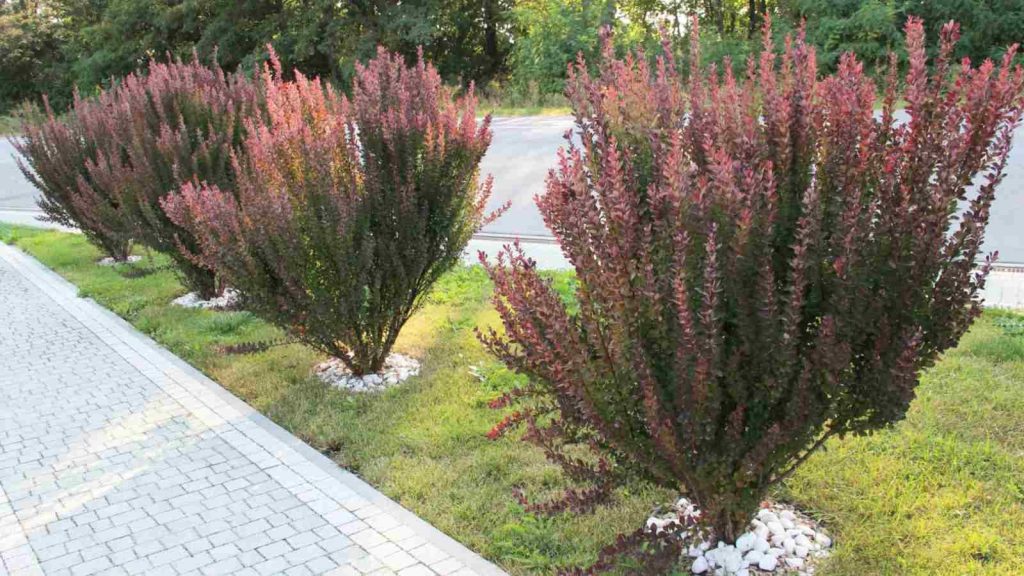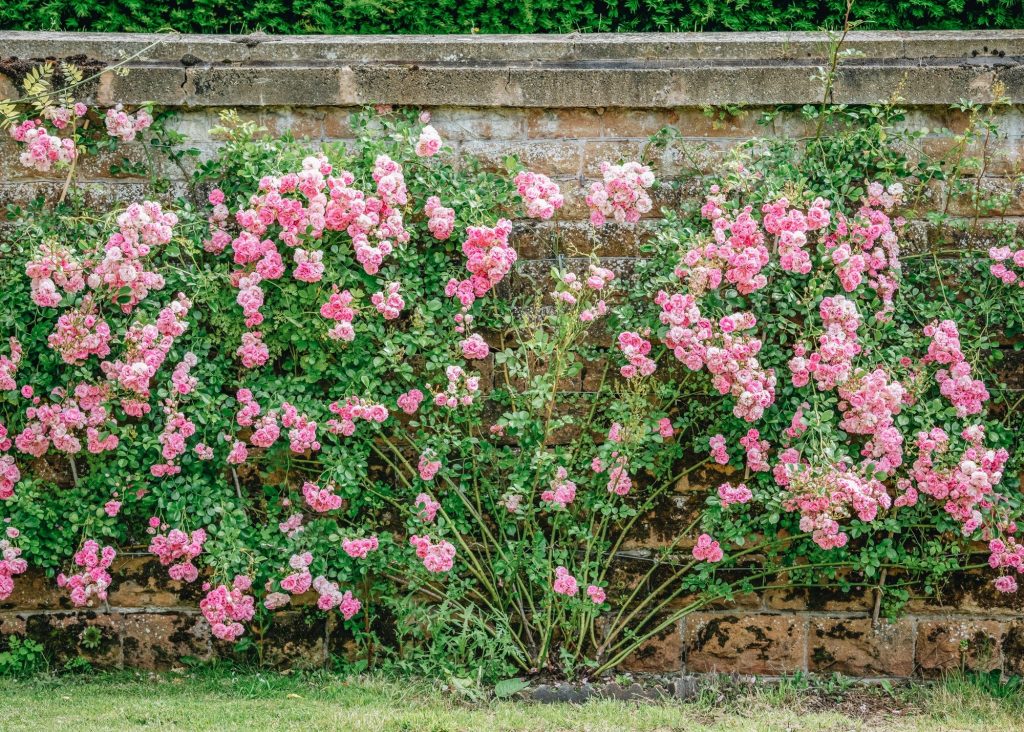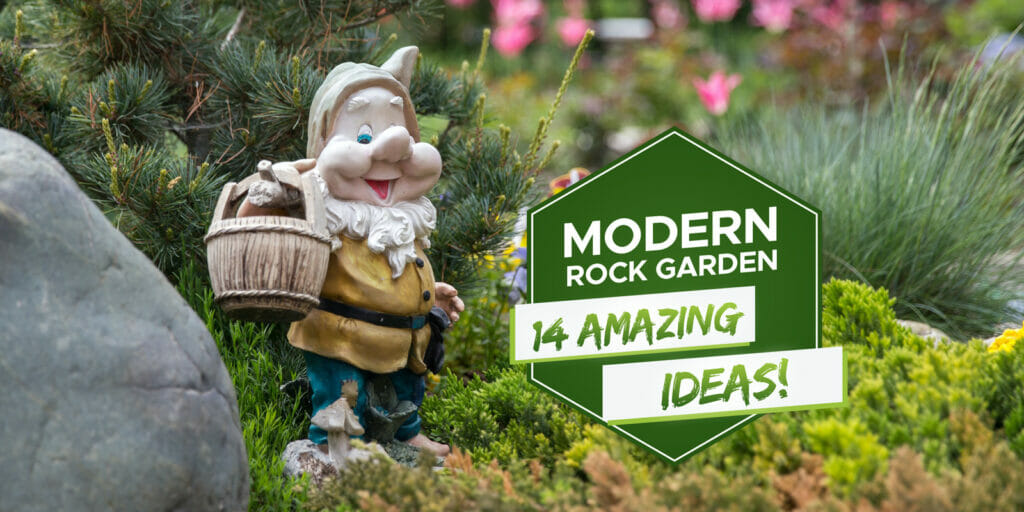Choosing the right shrubs for your front yard can boost your home’s curb appeal and create a warm, inviting look for visitors. Low-growing shrubs are perfect for adding color, texture, and structure without covering up windows or making your space feel crowded.
Whether you have a large garden or a small area to fill, picking the right plants will help keep your front yard neat and attractive all year. You can find low shrubs that need little care, offer blooms or evergreen leaves, and match many different styles.
1. Boxwood
Boxwood is a classic choice for the front of your house. You will find its dense, green leaves look tidy and fresh all year. Boxwoods grow slowly and keep their shape well, so you do not need to prune them very often.
This shrub comes in many different types and sizes. Some are perfect for low borders, while others can be shaped into neat hedges or round forms. If you plant boxwood in front of your home, you can make a row, a small group, or even highlight your walkway.
Boxwood does best in spots with sun or light shade. Make sure your soil drains well to help the plant stay healthy.
You can also find boxwood types that are more resistant to disease if you are worried about plant problems. These tough options still look great and last a long time.
Boxwood is evergreen, so it will keep its green color even in winter. This means your front yard will have color and structure all year. Boxwood fits well with many garden styles, from simple modern looks to more traditional designs.
2. Barberry Shrubs
Barberry shrubs are a great pick if you want color and texture in your front yard. These bushes are known for their bright foliage, which can be red, gold, orange, or green. Many varieties are small, so they fit well in front of your house without taking up too much space.
You’ll find barberry shrubs easy to care for. They tolerate many soil types and are fine with either full sun or partial shade. Their tough nature makes them a good choice for busy gardeners or anyone new to landscaping.
Barberry leaves offer fresh color all season, and they look especially nice in fall. The shrubs can handle urban conditions, so they work for city homes as well as suburban ones.
Barberry hedges can help you create neat borders or low barriers. Some popular dwarf types stay under three feet tall, making them perfect along walkways or near your front steps.
If you want more layers in your landscape, try planting barberry with evergreens like arborvitae or ground covers like creeping juniper. The mix adds both height and ground color to your yard.
3. Dwarf Holly Bushes
Dwarf holly bushes are small, evergreen shrubs that can fit well in front of your house. Their compact size makes them easy for you to manage, even if you have limited space. Most types stay around 2 to 5 feet tall, so you won’t have to worry about them getting too large.
You’ll notice their shiny green leaves all year, which helps keep your front yard looking fresh and lively through every season. Many varieties even have bright berries that attract birds and add a pop of color in the colder months.
Dwarf holly bushes work well as borders, low hedges, or foundation plants. You can plant them alone or group several together for a fuller look. They also tolerate some shade, so you can plant them near your porch or under taller trees.
These shrubs need only basic care once they are established. You will enjoy their neat shape with very little pruning. Dwarf hollies are strong plants that won’t need a lot of fuss, making them a great choice for low-maintenance landscaping.
4. Low-Growing Azaleas
Low-growing azaleas are a great way to bring bright colors to the front of your house without taking up too much space. These shrubs stay compact, usually growing to about 2 or 3 feet tall.
You can find them in many colors like pink, red, white, and purple. Dwarf varieties such as ‘Red Ruffle’ and ‘Madonna White’ are popular picks because they look neat and tidy.
These shrubs do best in areas with some shade but can handle morning sun. Because they stay small, you don’t have to worry about them blocking windows or walkways.
Low-growing azaleas work well in both traditional and modern landscapes. They look nice in group plantings or as single accents in flower beds.
If you have limited space or want a low-maintenance option, these azaleas are a good choice. Their blooms can last for weeks, bringing color and cheer to your home’s entrance.
Water your azaleas during dry spells and mulch around the base to keep their roots healthy. With just a little care, they will reward you with lovely flowers year after year.
5. Haas Halo Hydrangea
If you want a shrub with big blooms and easy care, Haas Halo Hydrangea is a great pick. This plant stands out with its large, white lace-cap flowers that can reach up to 14 inches wide.
The strong stems help the plant stay upright, so the flowers do not droop or flop over. Haas Halo Hydrangea usually grows about 3 to 6 feet tall and wide, making it a good size for the front of your house.
You will also love the deep bluish-green leaves, which look nice from spring to fall. This hydrangea can handle hot, dry summers without much stress, so you don’t need to worry about wilting.
It blooms on both old and new wood, which means you can trim it in late winter without missing out on summer flowers. The plant is easy to grow and fits in gardens that get some shade during the day.
Pollinators like bees and butterflies visit its flowers, adding even more life to your yard. This shrub gives you beauty and strength in one tidy package.
6. Hypericum Prolificum
If you want a low-growing shrub that brings both color and structure to your front yard, Hypericum prolificum is a great choice. This plant is also called shrubby St. John’s wort.
You can expect it to reach about 3 to 4 feet tall and just as wide. Its round, dense shape helps it look tidy and easy to manage.
In summer, Hypericum prolificum is covered in small, bright yellow flowers. These blooms are cheerful and can attract pollinators like bees to your garden.
This shrub does well in full sun and isn’t picky about soil. It is native to the eastern United States and can handle both dry and moist spots.
Hypericum prolificum loses its leaves in winter but still looks neat because of its fine branches. It does not need much pruning or care, so it’s perfect if you prefer easy landscaping.
7. Salix Humilis
Salix humilis, also called prairie willow, is a small, low-growing shrub that works well at the front of your house. You’ll notice its soft, fine leaves that give your landscape a gentle look.
This bush usually grows between 1 and 3 feet tall. It keeps a tidy, spreading shape, so it doesn’t block windows or walkways. You can use it as a border, along paths, or grouped with other low plants.
In early spring, you’ll see small flowers before the leaves appear. These flowers are good for pollinators like bees. As the seasons change, Salix humilis stays looking full and healthy, giving your yard texture all year.
It does best in sunny spots but can handle some light shade. This shrub is also quite hardy, so it can adapt to many types of soil and weather.
Salix humilis does not need a lot of care. Just give it a little water during dry periods and trim it if you want to keep it extra neat. It’s a nice choice if you want a calm, natural feel in your front yard.
8. Dwarf Yaupon Holly
Dwarf Yaupon Holly is a small, evergreen shrub that brings a neat look to any yard. Its dense, dark green leaves stay fresh all year and help your landscaping look tidy with very little work.
You’ll find these hollies stay about 3 feet tall and spread out to around 5 feet wide. Their round shape makes them perfect for lining walkways, borders, or planting beneath windows.
These shrubs handle most types of soil and do well in full sun or partial shade. Once established, they’re tough enough to handle some dry spells, so you don’t need to worry much about watering.
Dwarf Yaupon Holly grows slowly, so you won’t have to trim it all the time to keep it looking nice. If you want to shape them or keep them extra tidy, you can prune once or twice a year.
If you are looking to add a low-maintenance plant with a classic touch, Dwarf Yaupon Holly is a simple and reliable choice for your front yard.
9. Japanese Spirea
Japanese Spirea is a colorful and easy-care shrub you can plant at the front of your house. It offers bright clusters of pink or white flowers in summer and has small, neat leaves that turn red or orange in the fall.
This plant grows in a compact, rounded shape. It usually stays between 2 and 4 feet tall, so it won’t block your windows or crowd your walkway.
You can use Japanese Spirea as a border along paths or in low hedges to add a tidy, cheerful touch. It looks nice planted in groups or paired with other small shrubs.
Japanese Spirea grows best in full sun and well-drained soil. It needs only a little pruning to shape it, and it doesn’t require much maintenance.
Another benefit is that this shrub can return quickly, even after being cut back hard. Many gardeners like Japanese Spirea because it is simple to grow and adds long-lasting color.
Some varieties may spread seeds easily, so check if Japanese Spirea is a good fit for your area before planting. Always choose non-invasive types if you are concerned about local wildlife.
10. Dwarf Korean Lilac
Dwarf Korean Lilac is a great choice if you want a small, colorful shrub for the front of your house. This plant usually stays compact, growing about 4 to 5 feet tall and wide. It fits well in smaller spaces or along walkways.
In late spring, you’ll notice clusters of small, purple flowers. These blooms are known for a pleasant fragrance that can fill the air near your entryway. The flowers last for several weeks, adding both color and scent to your landscape.
Dwarf Korean Lilac likes full sun, so try to plant it where it will get at least 6 hours of sunlight each day. It is fairly low-maintenance and is known to be hardy in cool and temperate climates.
You won’t need to prune this shrub often to keep its shape. Occasionally trimming spent flowers can help it look neat. Dwarf Korean Lilac is a great option if you want reliable blooms and easy care.
11. Inkberry Holly
Inkberry holly is a native evergreen shrub that brings year-round color to your front yard. Its glossy, deep green leaves stay on the plant through winter, so you always have something nice to look at.
You can use inkberry holly as a tidy foundation plant along walkways or group several together for a small hedge. It can grow up to 5 to 8 feet tall, but there are smaller varieties if you want something more compact for the front of your house.
This shrub is strong and can handle different types of soil, even spots that get wet sometimes. It also stands up well to cold winters and is not usually bothered by deer or rabbits.
Inkberry holly is easy to care for. It needs regular watering until it’s established, then only occasional watering in very dry weather. Pruning is simple—you only need to shape it a little to keep it looking neat.
If you like boxwoods but need something tougher and less likely to get pests, inkberry holly is a solid choice. It’s also a good option if you want a native plant that fits well with other North American shrubs.
12. The Fairy Rose
The Fairy Rose is a charming little shrub that brings a soft, romantic vibe to your garden without asking for much in return. It’s a compact rose bush, usually growing around 2 to 3 feet tall and wide—perfect for borders, front yards, or even containers if you’re tight on space.
What makes it special? Clusters of small, double pink flowers that bloom nonstop from late spring all the way into autumn. Seriously, this one puts on a show for months. The blooms look delicate, but the plant is tougher than it appears. It shrugs off heat and can tolerate a bit of drought once established.
The Fairy Rose likes full sun but can handle a bit of light shade too. It’s also disease-resistant (a nice break from those high-maintenance roses) and doesn’t need much pruning unless you want to shape it a bit.
If you’re after something low-maintenance that still delivers major flower power, The Fairy Rose is a keeper. Try planting a few along a walkway or mixed into a perennial bed for that dreamy cottage-garden look.
13. Dwarf Alberta Spruce
The Dwarf Alberta Spruce is a favorite for front yards because of its neat, cone-shaped look. This evergreen shrub keeps its green color all year and adds a tidy feel to your home’s entrance.
You won’t need to worry about it outgrowing its spot. It grows very slowly, usually just 2 to 4 inches each year. You can easily keep it small with a little pruning once a year.
This shrub does best in full sun and well-drained soil. Place it about 3 feet away from other plants or buildings so it has space to grow and stay healthy.
Its dense needles make it look like a tiny Christmas tree. Dwarf Alberta Spruce also pairs well with low shrubs or flowers, making your front yard more interesting.
If you like a clean and classic look, this plant is a great choice. It’s also very low maintenance, which is perfect for busy homeowners.
14. Blue Star Juniper
Blue Star Juniper is a great choice for the front of your house if you want a plant that stays small and neat. This evergreen shrub is known for its pretty blue-gray needles that keep their color all year. The dense, mound shape gives your space a tidy look without much work.
You can plant Blue Star Juniper in garden beds, along walkways, or even in rock gardens. It grows slowly and stays compact, usually reaching about 2 to 3 feet tall and wide. This makes it perfect if you have limited space or want to avoid lots of trimming.
Blue Star Juniper loves full sun and does best in well-drained soil. Once established, it needs very little care and is drought-tolerant. You won’t need to water it much after it gets settled in your yard.
This shrub pairs well with other plants that have gold or green leaves. Its unique blue color stands out and adds interest to your landscape. For a low-maintenance and eye-catching plant near your entrance, Blue Star Juniper is a friendly and easy pick.
15. Lavender Cotton
Lavender Cotton is a compact shrub that brings soft gray-green leaves and bright yellow flowers to your front yard. It only grows about 1 to 2 feet tall, so it works well under windows or along walkways.
You’ll notice right away that the leaves have a nice scent if you rub them. The silvery color makes a nice contrast against green grass or darker plants.
This shrub likes full sun and dry soil. It does not need a lot of water once it is established. If you live in a hot or dry area, Lavender Cotton can be a good fit.
Lavender Cotton needs very little care. You may want to trim it lightly after flowering to keep its shape neat. It also stays green throughout most of the year.
You can plant Lavender Cotton as a border along paths or use it in groups for a tidy, organized look. The small yellow blooms in summer add a cheerful splash of color.
If you want a tough, low-growing shrub that is easy to care for, Lavender Cotton is worth considering for the front of your house.
16. Winterberry Holly
Winterberry Holly is a bright, eye-catching shrub that loses its leaves in fall but holds onto its colorful berries through winter. The berries are usually red and really stand out against the bare branches and snow.
You can use Winterberry Holly at the front of your house for all-season interest. It’s a native plant in the eastern United States and grows well in many gardens.
This shrub likes full sun to partial shade and needs at least four hours of direct sunlight each day. It grows best in soil that stays consistently moist.
Berry production is better if you plant at least one male shrub near several female plants. Only the females grow berries, so it’s important to have both. Birds visit often to eat the fruit, adding extra life to your yard.
Many varieties are cold-hardy and can do well in USDA zones 3 to 9. Winterberry Holly is a smart choice if you want an easy-to-care-for shrub that looks good in every season. Just remember to keep the soil from drying out for the best results.
17. Bougainvillea (dwarf varieties)
Dwarf bougainvillea brings bright bursts of color to the front of your house without growing too large. These smaller varieties are perfect when you want the bold look of bougainvillea but don’t have space for a sprawling vine.
You can keep most dwarf types trimmed to about 2 to 3 feet tall. ‘Helen Johnson’ is a popular choice for its pink blooms and compact shape. Other varieties like ‘Rosenka’ and ‘Oo-La-La’ also provide cheerful color and a neat, mounding habit.
Bougainvillea likes lots of sun and well-drained soil. They’re pretty tough plants and once established, they don’t need much water. Pruning helps keep their shape tidy and stops them from getting too wild.
Dwarf bougainvillea can work in flower beds, borders, and even containers near your front porch. If you want to add a lively pop of color and keep your yard tidy, these compact shrubs are a great pick.
18. Heather
Heather is a small, flowering shrub that adds color to the front of your house. It stays low to the ground, usually growing no taller than two feet. You will notice its tiny leaves and clusters of small purple, pink, or white flowers.
This shrub does well in full sun and prefers well-drained soil. You will like how hardy and easy it is to care for. Once it’s established, heather can handle dry conditions, so it doesn’t need a lot of water.
Heather is evergreen in many climates, so it provides year-round color. You can use it to line walkways or plant it as a border. Its soft blooms attract bees and butterflies, making your yard more lively.
Planting heather near your home softens hard edges and makes the front yard look welcoming. It also makes a nice mix with rocks or other low-growing shrubs. With its bright flowers, heather brings a splash of cheer to your entryway.
19. Dwarf Box Honeysuckle
Dwarf Box Honeysuckle is a small, low-growing shrub that fits well in front of your house. It has glossy green leaves and a neat, rounded shape. You will notice its tidy look, which stays attractive all year.
This shrub is tough and grows in many soil types, including sandy or clay soils. It can handle both sun and partial shade, so you have flexibility in where you plant it. Dwarf Box Honeysuckle is known for being low-maintenance.
In late spring or early summer, small clusters of white flowers appear. These blooms have a light, sweet scent that attracts hummingbirds. Placing Dwarf Box Honeysuckle under your windows lets you enjoy the fragrance when you open them.
This plant is also good for erosion control because it spreads gently with time. It works well for borders, foundations, or even in containers if you have a small space. You will not need to prune often, so caring for it is easy.
If you want a reliable and pretty shrub, Dwarf Box Honeysuckle is a friendly choice for your front yard.
20. Compact Indian Hawthorn
If you want a neat and tidy shrub for the front of your house, compact Indian hawthorn is a smart choice. This shrub stays small and rounded, so you don’t need to trim it much.
Indian hawthorn grows best in warm, sunny spots. The leaves are shiny and deep green, which makes them stand out year-round.
In spring, you’ll notice small clusters of flowers that can be pink or white. These flowers bring a nice pop of color and can even attract pollinators.
Indian hawthorn is easy to take care of. All it needs is good soil that drains well, some sun, and an occasional watering if it’s very dry outside.
You can plant Indian hawthorn as a border or in small groups. It also works well in front of taller shrubs or near pathways.
Because it stays compact, it won’t block windows or overpower your garden beds. This makes it a good option for neat, low-maintenance curb appeal.
Keep an eye out for leaf spot disease, especially if you live in a humid area. Good air circulation can help keep your plants healthy.
21. Dwarf Russian Sage
Dwarf Russian Sage is a great low-growing shrub if you want something easy to care for with a soft look. The silvery-green leaves and purple-blue flowers make it stand out in front of your house.
This plant grows only about 12-18 inches tall, so it will not block any windows. It spreads a little wider, filling in space but staying neat.
Dwarf Russian Sage needs full sun to grow well. It can handle dry soil and does not mind hot summers.
You will see flowers from mid-summer to fall, giving your yard extra color for several months. The blooms attract pollinators like bees and butterflies.
Pruning is simple. Just cut the old stems back in early spring. This will help the plant to grow back strong and tidy.
It’s a good choice if you want a hardy shrub that doesn’t require much water or special care.
22. False Cypress (Chamaecyparis pisifera)
If you want soft, feathery greenery at the front of your house, false cypress is a great option. This shrub comes in many shapes and sizes, including varieties that stay nice and low.
You might like how easy it is to care for. False cypress shrubs are strong, handle most weather, and keep their color all year.
Some types have golden-yellow foliage, while others are a cool blue-green. Their colors can match both classic and modern homes.
Use false cypress as a low hedge, in a mixed border, or even in a container. They work well on their own or with other plants for texture.
Try ‘Golden Mop’ for its bright yellow look or ‘Soft Serve’ for its soft, upright shape. Both stay compact and neat.
This shrub needs just average water and prefers well-drained soil. You don’t need to prune much, so it’s very easy to keep tidy.
If you want a friendly, welcoming look at your front entrance, false cypress is worth considering.
23. Dwarf Ninebark
Dwarf Ninebark is a hardy shrub that stays compact, making it a great choice for the front of your house. It usually grows up to about 3 to 4 feet tall, so it won’t block your windows or take over your garden beds.
You’ll notice its beautiful leaves, which can be deep burgundy, purple, or even have green undertones depending on the variety. In the spring and summer, it blooms with small pale pink or white flowers that look like little buttons.
This shrub is easy to care for. It can handle different types of soil, from dry to clay, and it’s tough in both sun and partial shade. Dwarf Ninebark also resists common pests and diseases, making it a low-maintenance option.
Its neat size and colorful foliage add year-round interest to any front yard. Use it alone or plant it in groups for bigger impact. Dwarf Ninebark also works well in small spaces or busy urban gardens.
If you want a plant that looks good and doesn’t require much work, Dwarf Ninebark is a smart pick.
How to Select the Right Low-Growing Shrubs
Picking the best low-growing shrubs for your front yard means thinking about light, soil, and style. Each factor can impact how healthy your plants look and how easy they are to care for.
Consider Sun and Shade Requirements
Before choosing a shrub, check how much sunlight the area in front of your house gets throughout the day. Some shrubs, like boxwoods and dwarf hollies, do well in partial shade. Others, such as dwarf barberry and some azaleas, need full sun to bloom and stay healthy.
If your front door faces north, the spot may not get a lot of sun. For these shaded areas, look for shade-tolerant plants like Japanese holly or low-growing yew. In contrast, south-facing spots get lots of sunlight. These areas can handle sun-loving shrubs such as compact junipers or dwarf spirea.
Here’s a simple table to help you:
| Shrub Type | Sun Needed | Shade Tolerant? |
|---|---|---|
| Dwarf boxwood | Partial to full | Yes |
| Azalea (dwarf variety) | Full to partial | Some varieties |
| Dwarf barberry | Full | No |
| Japanese holly | Shade to partial | Yes |
Match Shrubs to Your Soil Type
Different shrubs prefer different soils. Test your soil to see if it’s sandy, clay, or loam. Many evergreen shrubs, like boxwoods, like well-draining soils, so heavy clay should be improved with compost or sand. Azaleas and rhododendrons like acidic soil, so if your soil is more alkaline, you may need to add amendments.
If your soil gets soggy after rain, stay away from shrubs that get root rot easily. Instead, try shrubs that like moist soils, such as sweetspire or dwarf willow. For dry soil, junipers and barberry are reliable.
Shrub roots don’t like to stand in water. Use mulch to hold in moisture but keep roots cool in summer. Always make sure you know what type of soil your chosen shrub prefers before planting.
Balance Color and Texture for Curb Appeal
Think about how your shrubs look together in terms of color and texture. Pair fine-textured plants, like dwarf boxwoods, with the bold blooms of low-growing hydrangea or azalea for better contrast. Mixing green evergreens with flowering bushes adds variety.
Use these ideas to plan:
- Evergreen shrubs like boxwood or Japanese holly give year-round structure.
- Flowering shrubs such as dwarf spirea or hydrangea offer seasonal color.
- Variegated leaves add interest even when flowers are gone.
Choose 2–3 different types for balance, but don’t overcrowd. Consider the color of your house as well—a red-brick home looks nice with dark green or blue-green shrubs, for example. Keep mature spread and height in mind, so your shrubs don’t block windows or paths.
Frequently Asked Questions
Choosing low-growing shrubs for the front of your house can boost curb appeal and keep maintenance simple. There are many types that offer year-round interest, can handle sun or shade, and create neat borders without growing too tall or wide.
What are some low maintenance shrubs ideal for the front of a house?
Boxwood is a favorite because it stays green all year and only needs an occasional trim.
Dwarf Holly Bushes handle most soils, resist pests, and need little care once planted.
Barberry Shrubs are tough, handle dry spots, and add color with their red or golden leaves.
Can you recommend low-growing shrubs that thrive in full sun for the front yard?
Low-Growing Azaleas do well in sunny locations and burst with color in spring.
Lavender is a good choice if you want a fragrant option that loves sun and drains quickly.
Barberry Shrubs also perform best with lots of sunlight and bring bold colors to your yard.
What are the best small evergreen shrubs for creating a low border in front of a house?
Boxwood creates tidy, low borders and looks neat all year.
Dwarf Holly Bushes give you rich green leaves and a dense, compact shape.
Yew varieties such as ‘Densiformis’ also work well for short, evergreen borders along a walkway or porch.
Which dwarf shrubs under 2 feet are suitable for front of house landscaping?
Dwarf Boxwoods stay small and round, so they fit close to foundations or paths.
Dwarf Japanese Hollies also keep to about 2 feet tall and are easy to trim to shape.
Some miniature roses or compact spirea plants are low enough for these spaces and bring seasonal blooms.
What varieties of landscaping bushes are perfect for enhancing the front of a house aesthetic?
Low-Growing Azaleas add bright blooms and glossy green leaves.
Barberry Shrubs come in many leaf colors, so you can pick red, gold, or green for contrast.
Haas Halo Hydrangea brings big white flowers and adds a soft, welcoming touch to an entryway.
How do I choose 5-6 foot evergreen shrubs for my front yard that are easy to care for?
Look for varieties like larger Boxwoods or Japanese Hollies that grow to about 5-6 feet tall.
Select shrubs labeled as slow-growing and disease-resistant to cut down on pruning and worry.
Choose evergreens so your front yard keeps looking good no matter the season.

























